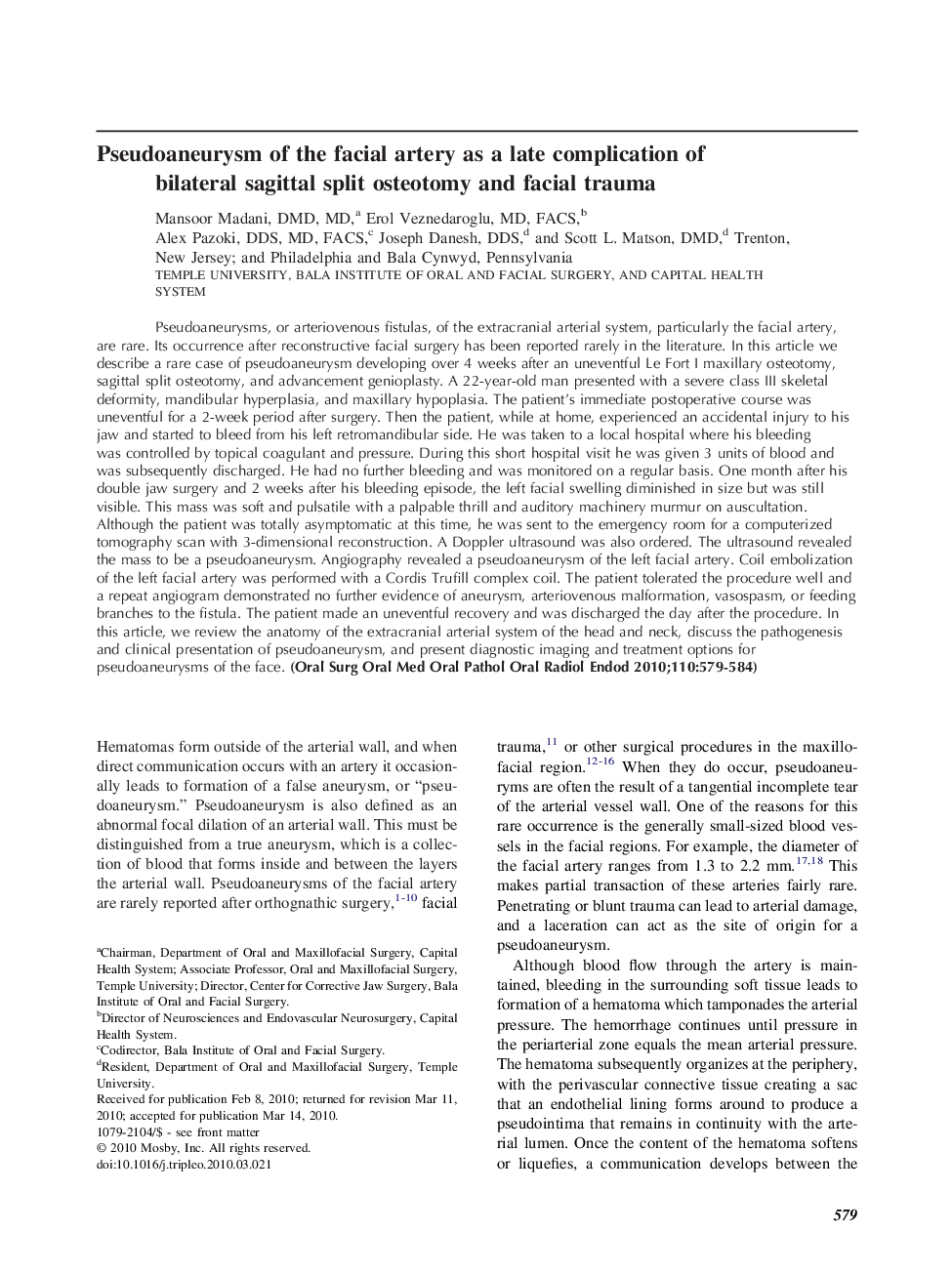| Article ID | Journal | Published Year | Pages | File Type |
|---|---|---|---|---|
| 3167450 | Oral Surgery, Oral Medicine, Oral Pathology, Oral Radiology, and Endodontology | 2010 | 6 Pages |
Pseudoaneurysms, or arteriovenous fistulas, of the extracranial arterial system, particularly the facial artery, are rare. Its occurrence after reconstructive facial surgery has been reported rarely in the literature. In this article we describe a rare case of pseudoaneurysm developing over 4 weeks after an uneventful Le Fort I maxillary osteotomy, sagittal split osteotomy, and advancement genioplasty. A 22-year-old man presented with a severe class III skeletal deformity, mandibular hyperplasia, and maxillary hypoplasia. The patient's immediate postoperative course was uneventful for a 2-week period after surgery. Then the patient, while at home, experienced an accidental injury to his jaw and started to bleed from his left retromandibular side. He was taken to a local hospital where his bleeding was controlled by topical coagulant and pressure. During this short hospital visit he was given 3 units of blood and was subsequently discharged. He had no further bleeding and was monitored on a regular basis. One month after his double jaw surgery and 2 weeks after his bleeding episode, the left facial swelling diminished in size but was still visible. This mass was soft and pulsatile with a palpable thrill and auditory machinery murmur on auscultation. Although the patient was totally asymptomatic at this time, he was sent to the emergency room for a computerized tomography scan with 3-dimensional reconstruction. A Doppler ultrasound was also ordered. The ultrasound revealed the mass to be a pseudoaneurysm. Angiography revealed a pseudoaneurysm of the left facial artery. Coil embolization of the left facial artery was performed with a Cordis Trufill complex coil. The patient tolerated the procedure well and a repeat angiogram demonstrated no further evidence of aneurysm, arteriovenous malformation, vasospasm, or feeding branches to the fistula. The patient made an uneventful recovery and was discharged the day after the procedure. In this article, we review the anatomy of the extracranial arterial system of the head and neck, discuss the pathogenesis and clinical presentation of pseudoaneurysm, and present diagnostic imaging and treatment options for pseudoaneurysms of the face.
